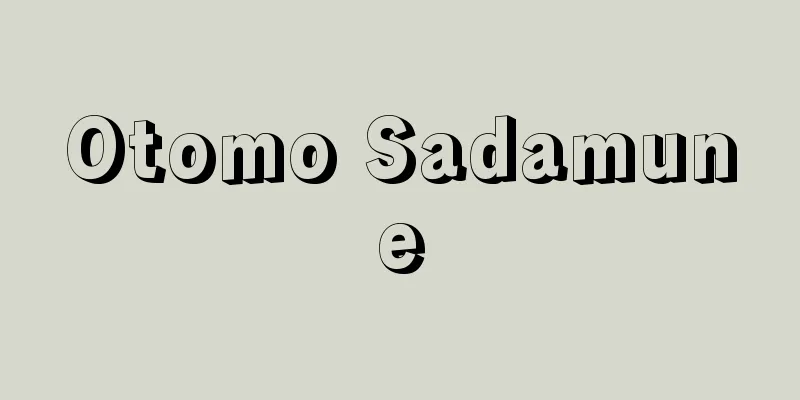Hemostatic drug - Hemostatic

|
This refers to drugs that stop or prevent bleeding caused by diseases such as purpura, hemophilia, and scurvy, or by blood vessels that are damaged or ruptured due to trauma or arteriosclerosis. When the body is injured and bleeding occurs, the defense mechanisms are (1) vascular contraction, (2) platelet adhesion and aggregation, (3) blood coagulation, and (4) fibrin dissolution. In other words, bleeding occurs when blood vessels are damaged. When bleeding occurs, an enzyme called thromboplastin is immediately released from the vascular tissue, and platelets aggregate, some of which dissolve and release thromboplastin. This thromboplastin is activated by calcium ions in the blood, and becomes thrombin from prothrombin. Thrombin acts on plasma fibrinogen to produce fibrin, and these fibrin fibers entangle to form a blood clot, initiating blood clotting. The damaged area is then covered with a blood clot, and bleeding stops. Meanwhile, excess thrombus is dissolved by the fibrinolytic enzyme plasmin. Hemostatic drugs include: [1] Drugs that act by constricting blood vessels: Epinephrine (adrenaline). [2] Treatments to stop uterine bleeding: Ergot preparations. [3] Substances that strengthen blood vessels: Carbazochrome preparations (such as Adona and Adclone), rutin, vitamin C (ascorbic acid), and conjugated estrogens. [4] Substances that act on platelets: ethamsylate to stimulate platelet function, and hemocoagulase (reptilase) extracted from snake venom. [5] Substances that promote blood clotting: Thromboplastin preparations, thrombin-like substances, vitamin K preparations, fibrin preparations, calcium preparations, gelatin preparations, and oxidized cellulose. [6] Others: Epsilon aminocaproic acid (EPSILON) and tranexamic acid (TRANSAMINE), which are antiplasmin drugs. Protamine sulfate, which antagonizes the anticoagulant heparin, is also considered to be a hemostatic drug. Hemostatic agents can be used topically by direct application or patching to a localized area, or taken orally or administered systemically via injection. Topical agents include epinephrine solution, as well as astringents such as ferric chloride solution and tannic acid solution, and thrombin is spread as a powder. Gelatin is taken orally or injected, and is also used topically using a sponge. Oxidized cellulose is often used in surgery. Another example is hemostatic wax (or bone wax), which is used to stop bleeding during bone surgery. Vitamin K preparations and carbazochrome preparations are taken orally and injected. [Fumiji Koho] "Clinical Hemostasis and Thrombosis" by Tamotsu Matsuda (1996, Shinko Medical Publishing) [References] | | | | | | | |Source: Shogakukan Encyclopedia Nipponica About Encyclopedia Nipponica Information | Legend |
|
紫斑(しはん)病や血友病、壊血病などの疾患、あるいは外傷や動脈硬化などで血管が損傷を受けたり破綻(はたん)したりして、出血がおこったとき、これを止めたり予防したりする薬物をいう。生体が損傷を受けて出血をおこしたときには、その防御機構として、(1)血管の収縮、(2)血小板の粘着・凝集、(3)血液の凝固、(4)線維素の溶解、といった機能が働く。すなわち、血管が損傷を受けると出血する。出血するとただちに血管組織からトロンボプラスチンという酵素が放出され、また、血小板が凝集し、その一部が融解して同じくトロンボプラスチンを放出する。このトロンボプラスチンが血中のカルシウムイオンによって活性化され、プロトロンビンからトロンビンとなる。トロンビンは血漿(けっしょう)フィブリノゲンに働いてフィブリンを生成し、このフィブリン線維が絡み合って血栓をつくり、凝血が始まる。そして損傷部は凝血で覆われ、出血が止まる。一方、余分な血栓は線維素溶解酵素のプラスミンによって溶解される。 止血薬には次のようなものがある。 〔1〕血管を収縮させて作用するもの エピネフリン(アドレナリン)。 〔2〕子宮出血を止めるもの 麦角製剤。 〔3〕血管を補強するもの カルバゾクロム製剤(「アドナ」「アドクロン」など)、ルチン、ビタミンC(アスコルビン酸)、結合型エストロゲンなど。 〔4〕血小板に働くもの 血小板機能亢進(こうしん)エタンシラート、ヘビ毒からとったヘモコアグラーゼ(「レプチラーゼ」)。 〔5〕血液の凝固を促進するもの トロンボプラスチン製剤、トロンビン様物質、ビタミンK製剤、フィブリン製剤、カルシウム製剤、ゼラチン製剤、酸化セルロース。 〔6〕その他 抗プラスミン剤であるイプシロンアミノカプロン酸(「イプシロン」)、トラネキサム酸(「トランサミン」)。抗凝血剤のヘパリンに拮抗(きっこう)する硫酸プロタミンも、止血薬の一つと考えられる。 止血薬の使用法には、外用として局所に直接塗布または貼布(ちょうふ)するものと、内服や注射で全身的に投与するものがある。外用にはエピネフリン液のほか、塩化鉄液、タンニン酸液などの収斂(しゅうれん)剤があり、トロンビンなどは粉末を散布する。ゼラチンは内服や注射のほか、スポンジを用いての外用もある。酸化セルロースは外科でよく用いられる。ほかに、骨の手術時の止血に用いられる止血蝋(ろう)(あるいは骨蝋)がある。ビタミンK製剤、カルバゾクロム製剤は内服と注射で用いられる。 [幸保文治] 『松田保著『止血・血栓の臨床』(1996・新興医学出版社)』 [参照項目] | | | | | | | |出典 小学館 日本大百科全書(ニッポニカ)日本大百科全書(ニッポニカ)について 情報 | 凡例 |
Recommend
Monoplacophora
…There are about 2,000 species in the world, and ...
River beetle - River beetle
…A general term for the larvae of aquatic insects...
Tukiainen, A. (English spelling) TukiainenA
…Among contemporary sculptors, Eila Hiltunen (192...
Yasuyuki Namikawa
Year of death: May 28, 1927 Year of birth: 1845 A ...
Parulidae; New World Warblers
A general term for birds of the family Parulidae i...
Inuyama alluvial fan - Inuyama alluvial fan
… The alluvial plains of the Nobi Plain are rough...
Algebraic equations
An equation with unknowns x, y, z, etc. is f(x,y,...
Hokuriku Expressway - Hokuriku Expressway
An expressway that runs along the Sea of Japan ...
Zodiacal light
A faint band of light that appears as a triangle ...
Tongo - Tongo
〘Noun〙 A Buddhist term. To reach ultimate enlighte...
bypass
〘noun〙 (bypass)① A road that is built to avoid par...
Character - keishitsu (English spelling)
This refers to the physical shape and characteris...
Kyushu Shinkansen - Kyūshū Shinkansen
This is one of the so-called new Shinkansen lines ...
Akee - Akie (English spelling)
An evergreen tree of the Sapindaceae family (APG ...
Giraffe - giraffe (English spelling)
An animal of the order Giraffidae, order Artiodac...









